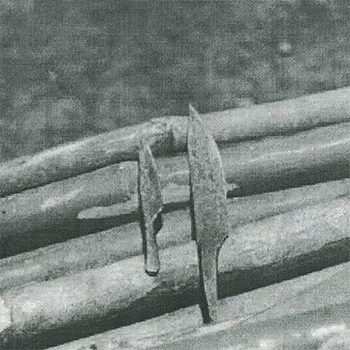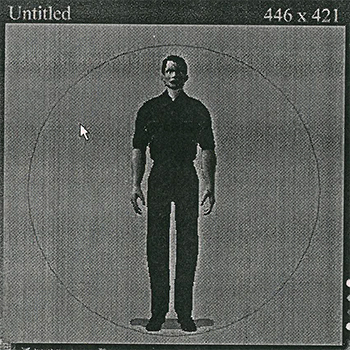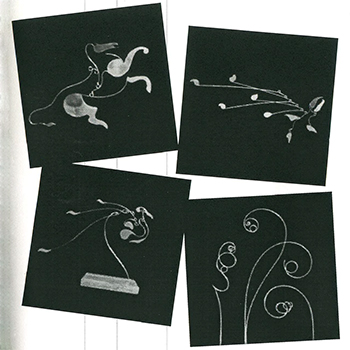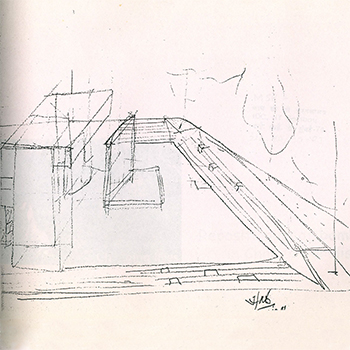Product Design
Batch 1999-2001
(8 items)
Product DesignBatch 1999-2001
(8 items)
(8 items)
by Ajay Tiple
Chandrapur has many craft traditions in its interior villages. Bamboo crafts are prominent among them. Chandrapur has a plethora of bamboo crafts activities, the majority of which take place in the interior, such as in villages. The products that are made are craft items in addition to a few utility items. Despite their original skills, the native craftsmen receive poor economic returns.
The project basically deals with all these issues by assessing the current situation in terms of the products, markets, production, marketing, etc. and looking at the possibilities of repositioning the craft, which can fetch better economic returns to the crafters. A basic model is proposed and compared with other such cases in Kerala, Thailand. Finally, an attempt is made to propose a model that will work in such a situation.
by Ashish A Tiwari
Everyday things, being inanimate objects, are not expected to have psychology, a term normally associated with animate or living things. But Donald Norman’s book "The Design of Everyday Things" is based on this very idea of everyday things having a psychology; this idea came from the fact that people have definite notions about how things work and how they go wrong. Donald Norman describes the influencing factors in the usability of everyday things as the psychology arising out of the interaction involved in working on everyday things.
This interaction can be said to happen in an "interface layer" between the user and the thing. And it is at this interface layer that the attributes and dimensions influencing usability come into play. Similar can be said about the computers, as the interface in the form of the monitor is the major tool for interaction and getting the work done. The computer interface is not a static interface, as any other everyday thing or device may have. The computer interface is a dynamic one due to the range of tasks involved. So in order to understand the influencing factors in interface design, a clear understanding of the influencing factors in everyday things will help.
by Ashutosh Kumar
Why don't people talk in cyber cafes, as opposed to other places where the young and restless congregate, such as rock concerts and cricket match grounds? A person absorbed in a cell phone conversation's changing expression is a symbol of emotional connection. The digital connection not only brings us much closer, but it has also started playing a role in connecting humans to objects. Web-enabled and self talking appliances are going to become a vital part of our day-to-day lives. As digital media devices gradually become even more enmeshed in our lives, it is a really challenging and growing field that needs the serious attention of designers to be an active participant in a novel interaction between humans and objects. The project is aimed at a serious investigation into the above-mentioned environment and retrospecting the attributes of such products, so-called "smart products.
Smart products are smart because they are capable of "thinking"—of learning to anticipate and meet the needs of the user. The "brain" that does this thinking is a microprocessor, or a chip, the basic unit of all computers. Smart products are "mechatronic" systems, or innovations that integrate mechanical, electrical, and software subsystems in order to make a product behave intelligently. With microchips increasingly finding their way into even the most mundane of objects, such as watches, it admits that it will be difficult for them to become as synonymous in consumers' minds with "smart" appliances as Intel is with PCs. Previously, products were either made simple so that anyone could use them, or too complex with multiple uses, like a computer or VCR. The complicated products require a learning process, which inhibits many people and satisfies only those who are willing to invest the time and energy to learn how to use them.
The intelligent appliance adapts to the user's characteristics, becoming very simple and relatively error-free for the casual user while providing more features and capabilities for those who require or wish to use them. Adaptation includes functional changes as use progresses from basic functions to the need for more advanced features later on. The appliance recognises which buttons are being pushed as well as the user's habit patterns and adapts accordingly. A significant and useful intelligence characteristic is diagnostics—not only after failure but also predictive and advisory. It’s not sufficient to know that a product has failed; if the failure occurs at an inconvenient time, that may result in great trouble. Indeed, some time this "pre-signal" allows the user to arrange alternatives; for example, if a button appears to be sticky, the appliance can perhaps continue to operate with some precautions. This is analogous to detecting rattling in an automobile engine and correcting the problem before it becomes catastrophic.
by Nikhil Jadhav
In 1623, Galileo proposed that mathematics is the language that we should use to understand the universe. In his time, this meant using traditional Euclidean geometry to describe the seemingly complex natural shapes around us. However, this type of geometry proves to be an inadequate way to understand natural structures. After all, mountains are not cones, rivers are not straight lines, and clouds are not spheres.
Fractals were discovered at the turn of the last century. They were viewed as curious images of intrigue but of limited use until Mandlebrot pioneered the field of fractal geometry in the early 1900s. They can model and describe certain seemingly complex forms and phenomena that occur in the world. Myriads of natural fractals exist: galaxies, landscapes, and clouds. On a smaller scale, consider proteins and polymers; fractals can even be found within our bodies—our lungs and blood vessels.
by Nirav Shah
Computers experts are already talking about technology that conforms to humans rather than humans adapting to technology, where human perception plays an important role in defining the needs and constraints of the user. Researchers are now studying the "human" factor in human-computer interaction and formulating principles under which a system must adapt to the user and guidelines that would help the designer achieve these goals.
Human perception plays an important role in producing visual forms. But still under question are issues like visual design, which is rated very low in matrices compared to functional issues. The project was initiated with an inquiry into a few issues that are still not fully understood by interface designers.
by Parul Prahhan
The project is a part of ongoing experimentation by Prof. Vanmala Jain. It is an attempt to fill up the gap in the field of mobiles, where mobiles made of all other materials have already come a long way, but those made of ceramics are still emerging.
The project was carried on simultaneously in two separate channels: product and material, as in mobiles and ceramics. The former dealt with the study of the concept of mobiles in a western as well as an Indian context, the existing stage of the field chosen, various types of mobiles, etc. to understand the structure of mobiles as a product. The latter dealt with material comprehension through experimentation and exploration. This was done to know the boundary of the project so that the scope of the project could then be defined.
The field being too vast to be covered in the available time, it was decided to limit the material, process, and basic form so that this could be explored in detail. Since this was the first experience with the material, the exploration gave a chance to learn the process from the basic level to the details and complexities of model making, mould making, casting, cutting, finishing, biscuiting, glazing, and firing. Various concepts were developed and tried at different levels; some of them were developed further as the material's experience increased, depending on the complexities of the process and the limitations of the material. The pieces made were then tried out to make mobiles as per the concepts developed and installed in the place of their emergence.
The project at each step was full of surprises and lots of information, which helped keep the interest alive from the beginning to the end. This being an exploration project, it is supposed to be left open-ended so that it could be carried on further in the future by others.
by Sulekha Kuthiala
This paper is part of a series of papers that explore the way designers use mental imagery to solve design problems. Given the task of designing a snack bar for a fashion institute located in an urban area, this paper will attempt to identify and compare the unique strategies that the architects developed to argue and take visuo-spatial decisions when blindfolded and prevented from using their usual thinking tool like sketching. New findings in the current experiments reveal the "goal setting" process that Suwa et al established for sketching. Therefore, the "S" invention of design issues and requirements talked about in this paper has its relevance to mental imagery as well, and we hope to show that our data disputes this emphasis that Suwa et al place on sketching.
by Vinayak Raje
The term "bionics" refers to the science of constructing artificial systems that have some of the characteristics of living systems. Bionics is not a specialised science but an interscience discipline; it may be compared with cybernetics (the science of communication and control in animals and machines). Bionics and cybernetics have been called two sides of the same coin. Both use models of living systems: bionics to find new ideas for useful artificial machines and systems, and cybernetics to seek the explanation of living beings' behaviour.
The project Bionics: From Bud to Flower is an attempt to relate the beautiful natural phenomenon of flower blossoming with some applications in design. The process of bionic science has been understood through case studies. The process of flower blossoming has been analysed in design terms, and then an algebraic system has been developed with possible combinations.







